Poor science teaching, a bureaucratic research environment and a confused government mandate on the purpose of doing science seem to have relegated Indian science to a not-so-happy zone, according to science policy makers and senior scientists.
So much so that the country's Prime Minister pointed to the decline in Indian science over the last few years at one of the most important government-sponsored meet of peers — the 99th Indian Science Congress held in Bhubaneswar, Odisha. He also went ahead to compare scientific publishing in India vis-a-vis China to elucidate that his country needs some good catching up to do with the neighbour.
Policy makers are viewing this as an opportune call to 'shake up Indian science from its slumber'. The single most important contributor to the decline in Indian science, they say, is the poor quality of science teaching in schools and higher education centres.
More bricks less brains
Rajesh Kochhar 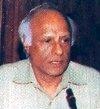
Kochhar says the absence of world-class scientists in India is not as worrying as the absence of science teachers for children. "Once science is taught properly, support and pursuit of science will emerge automatically." Solutions involving the next generation should be thought out on the time scale of 15 years, and not till the end of the current fiscal year or the next general election, he points out.
S.C.Lakhotia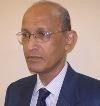
"Most universities and colleges are grossly under-staffed and infrastructure-wise poor. Teaching is no longer a preferred job," he says. The yardsticks for promotions in universities and colleges, as recently approved by the University Grants Commission, rely heavily on research achievements and not teaching. "Consequently, everyone gets engaged in meaningless or even fictitious research", he adds.
Decline, really?
Aditya Mittal
Mittal says the top scientists of the country talk about the need for creation of supportive administrative procedures. "But the same scientists, when in bureaucratic positions, are unable to implement their ideas because of the stiffness of bureaucracy."
"Which was the last scientific idea that originated in India? How many such ideas have gone on to attract Indian scientists to work on it?" he asks.
On the very purpose of the Indian Science Congress, Kochhar says the meet, entirely funded by the government, brings together a huge number of practitioners every twelve months to present the results of not-so-great research. "If the Science Congress were held once in two or three years, it would save the Indian Prime Minister the embarrassment of repeating himself year after year," he says.
Indian science, he points out, was fairly competitive till the end of World War II, but then it sharply fell behind. In the early years when modern science was young, its infrastructural requirements were modest, they were available in India at the level of college labs. "As science became more and more a child of high technology, which India did not develop, India almost disappeared from the map of world science," he adds.
On the Prime Minister's repeated call for doubling of expenditure on R & D by 2017, he says the solution to a problem does not lie in enhancing expenditure, but in changing the mindset. "British science, for example, is better value for money, even if marginally, than the French or the German. So, there must be other factors at work," he contends.
First things first
Lakhotia says unfortunately, policy makers do not address the basic issues that afflict the education system. A few IISERs cannot replace the large number of existing teaching institutions, especially if these new/elite institutions continue to "export" their products abroad for research and training.
M. S. Swaminathan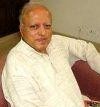
"There's an increasing emphasis on bricks rather than brains in building new universities and institutions," says agriculture scientist Monkombu Sambasivan Swaminathan pointing to the most important reason behind the decline. "The Homi Bhaba doctrine of building institutions around outstanding individuals has been given a go by. Exceptions however exist like TIFR, Indian Institute of Science, ISRO and DRDO," he says.
Swaminathan says the emphasis on scientific aptitude and capability of young scholars should be brought back. Also, the selection of heads of scientific institutions should be based on innovativeness, scientific creativity, social commitment and team forming quality.
M. Vijayan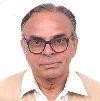
"The existing structure is inadequate to meet the requirements of modern internationally competitive scientific research. We need a vibrant, resilient and sensitive system which is less bureaucratic, less hierarchical, more autonomous and more participatory," he says.
Far end of the tunnel
Scientists and policy makers are unanimous that it will take quite a while to change the way India conducts science and becomes competitive. New initiatives taken by India — such as the creation of IISERs, new institutes of technology and a number of universities — have perhaps not gone waste, says Lingadahalli Sashidhara, biology professor at IISER Pune.
L. Sashidhara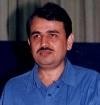
"Our faculty are giving intense competition (to global scientists) for grants and awards. The quality of projects coming to funding agencies is going up. Research papers from India in high-impact journals have become frequent, even if small in numbers. This is the beginning. Any transformation would take a couple of human generations (40-50 years)," he contends.
